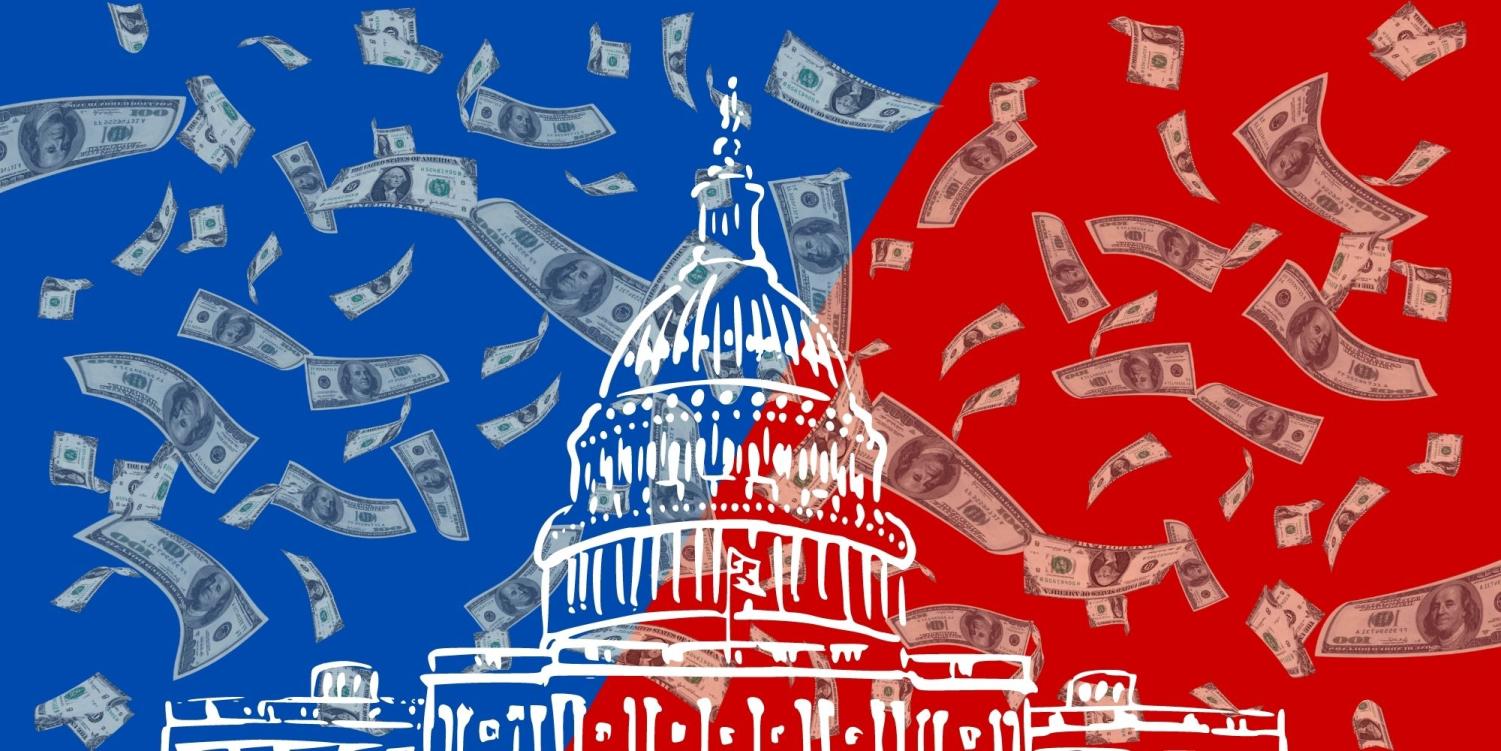



The process that eliminates the need for bipartisanship — if all of one party can agree
November 1, 2021
Editor’s note: This story reflects the state of the bill on Monday, Nov. 1st. Senate negotiations are ongoing and the bill is not yet finalized.
President Joe Biden’s Build Back Better Act has been called many things. While Biden touted his plan as a “once-in-a generation investment in working America,” Republicans, like Oklahoma Sen. James Lankford, have countered calling it “a hard lurch towards socialism.”
The criticism from Republican senators has not swayed Biden’s commitment to the bill’s passage. However, Democratic Sens. Joe Manchin from West Virginia and Kyrsten Sinema from Arizona are holding out on backing the bill, causing Biden to scramble for their support, leaving the now $1.75 trillion bill — slowly stripped of its original provisions — awaiting a vote.
Since the introduction of the act in late September, the bill’s passage has met roadblocks at every turn. With the original price tag of $3.5 trillion for the entire package and provisions including Medicaid expansions, tax increases and guaranteed federal parental leave — it was less than unlikely to garner Republican support in the Senate.
Knowing this, Senate Democrats anticipated the passage of the bill through budget reconciliation, a process that circumnavigates the filibuster and only requires a simple majority — 51 votes — to pass legislation. With an avenue to pass the bill along party lines, establishing the bill as law is alluringly simple.
According to James Nordin, a lecturer with Sonoma State’s Political Science Department who formerly taught at SF State, the process of budget reconciliation often leaves a party gambling in a high stakes game requiring compromise.
“This is definitely a zero sum game. This is either win or lose,” Nordin said. “It is that one person is the tipping point. It is the circumstance of the fact that it is 50-50.”
Budget reconciliation was established as a way to pass legislation in the Congress in 1974 after the introduction of the Impoundment Control Act.
Reconciliation was initially implemented to put an end to presidential impoundment — when a president refuses to spend funds approved by Congress. In being enacted, the act also established House and Senate budget committees.
When each committee draws up a budget, it may not be in agreement with each other or with the numerous subcommittees of the broader appropriations committee. If subsequent proposals do not reach an agreement, budget reconciliation can be pursued to pass an omnibus bill, compiling a variety of legislation addressing the wishes of many committees.
All provisions included in a budget reconciliation bill must follow guidelines for inclusion set by the Byrd Rule. Established in 1985, the Byrd Rule is invoked when a senator raises a point of order against a specific inclusion to a bill.
READ: The limitations on legislation included in reconciliation bills. A provision can be deemed extraneous if it falls under the stipulations of the Byrd Rule.
The Limits of the Byrd Rule by Eve DeBord
If any senator shall challenge a specific provision as being extraneous, the nonpartisan Senate Parliamentarian determines whether or not the provision must be stricken from the bill. [18] The Parliamentarian is appointed by the Senate majority leader and does not have a strict term limit — only vacating the role by their own will or at the will of the majority leader.
Budget reconciliation’s key feature is that the process allows for a workaround of the filibuster.
The filibuster deadlocks legislation in the Senate, particularly with bills that are only supported on party lines. Requiring debate to be left open on an item until 60 votes are met can quickly end the life of legislation in the Senate.
According to U.S. Senate’s website, filibusters were widely used by southern senators to block civil rights legislation, including anti-lynching laws.
Bills passed using budget reconciliation only require a simple majority to pass in the Senate. Though only nine votes less than the 60 typically required when up against a filibuster, this proves to be the only workaround and can be very effective in passing legislation without any support from the opposing party.
The passage of the American Rescue Plan in March was the most recent use of budget reconciliation and prior there were 21 successful uses of the process.
Similarly to how Biden’s Build Back Better Act is being stripped of some provisions, the American Rescue Plan had multiple iterations before the bill was finalized. Most notably, the Senate Parliamentarian struck the provision gradually increasing the minimum wage to $15.
Other provisions were also removed from the bill — including a longer timeframe for unemployment benefits and funding for BART’s rail extension — due to compromises between Democrats to ensure all votes necessary for the bill’s passage.
Before Biden, the most widely recognized use of budget reconciliation was former President Barack Obama’s 2010 expansion of the Affordable Care Act, though both parties have used the process to pass legislation without the need for bipartisanship.
The weight of what budget reconciliation allows becomes more crucial when margins are tighter between parties. When every vote of a single party is needed to pass a bill along party lines, individual senators may withhold their support until others of the same party can appease them by adjusting the bill to their liking.
Nordin said that increasing tensions between the Republican and Democratic parties took off in the 1990s and have continually heightened throughout the 2000s.
Nordin attributes this to the increasing desire of the Republican Party to have a smaller government that spends less while Democrats have sought the opposite. He also said that politicians’ concern over securing a win in their next election cycle influences voting action.
“Biden clearly has said let’s go big,” Nordin said. “Both sides, I would say, especially the Republicans, feel that if they give a little, their base won’t support them.”
Biden entered office at a prime time for budget reconciliation. With the Senate 50-50, between Republicans and Democrats — including Independents alongside Democrats — legislation that doesn’t have bipartisan support has a narrow window for passage. Vice President Kamala Harris holds the tie-breaking vote.
Since its introduction in late September, the bill has been stalled in the Senate awaiting a vote, though Biden’s negotiations with Manchin and Sinema last week may have made a breakthrough.
Initially not budging on her stance of opposing the bill, on Thursday Sinema tweeted that “significant progress” was made in the negotiation process. This came after Biden delivered remarks urging the House to vote on a separate $1 trillion bipartisan infrastructure bill already approved by the Senate.
Members of the Congressional Progressive Caucus have been holding out on voting for the infrastructure bill until they are assured of the Build Back Better Act’s passage in the Senate and were unconvinced by Biden’s speech, delaying the House vote for another week.
Sinema and Manchin’s lack of support for the Build Back Better Act has led to mincing of many of the bill’s initial provisions in attempts to secure their necessary votes.
READ: Some of the significant provisions of Biden’s revised framework for the Build Back Better Act — what is still in and what got the cut.
Build Back Better Breakdown by Eve DeBord
One of the more significant cuts was the entire removal of federally guaranteed paid parental leave from Biden’s updated framework.
According to John Logan, the chair of SF State’s Labor and Employment Studies Department, the removal of this provision keeps many Americans reliant on their employers to receive paid leave.
Logan said the lack of federal protection is particularly harmful to low income workers who work for companies that do not offer extensive benefits packages.
“The United States is just lightyears behind most advanced democratic countries when it comes to this issue,” Logan said. “It’s really shocking that even after having gone through the experience of the last 18 months that Democrats can’t come to an agreement.”
The future of Biden’s Build Back Better Act is uncertain, given neither Sinema or Manchin have yet made clear their support for the pared down framework. Right now, it is unlikely that the House will reach a vote on the separate infrastructure bill without the assurance of Sinema and Manchin’s support.
In remarks given Monday at the Capitol, Manchin stated that he would not be swayed by the holdup of the infrastructure bill in the House and offered an ambiguous statement regarding his support for Biden’s new framework.
“I’m open to supporting a final bill that helps move our country forward, but I’m equally open to voting against a bill that hurts our country,” Manchin said.
In any circumstance where there is less than 60 votes held by one single party in the Senate, budget reconciliation may present itself as a viable way to pass legislation.
In instances like Biden’s Build Back Better plan, it will prove the only way legislation is able to bypass the filibuster without a single yea vote from the opposing party.

